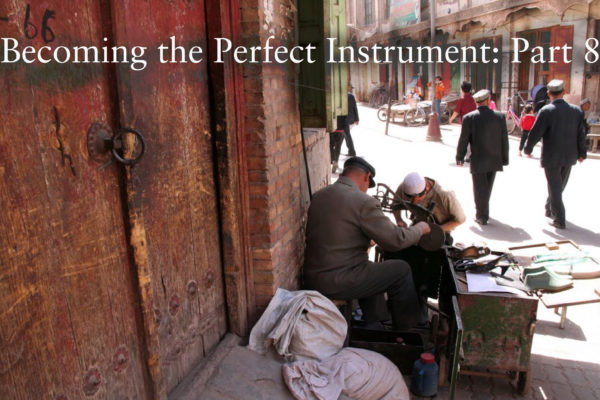
Founders often feel their work can never be completed. Or they feel that the completion of this work could only be the completion of the company, an exit in which the company becomes someone else’s opportunity, someone else’s problem.
Let’s play with the opposing idea: that there is a distinct founding era in a company, and that when the company “graduates” from that era, the work of founding is completed. The founder’s work as an individual may continue indefinitely, but the nature of that work changes.
The founding era is the best opportunity to weave into an organization’s DNA those elements most lastingly critical to its vision of its place in the world, its most distinctive capabilities, its values and its voice. During the founding era, a set of factors is shaped or falls into place in a way that sets the stage for further evolution:
- The founding team, and what they believe the enterprise is for
- The fundamental “technology” the organization uses to create value (a product/service and the essential elements of how that product/service is produced)
- The enterprise’s economic logic: where resources come from and how those resources are metabolized to sustain and evolve the organization and to produce the organization’s work
- The external constituents who have the most important claims on the enterprise, and the way those claims are regarded and honored
- The enterprise’s central narrative, tempo, norms (spoken and unspoken) and many other elements of its culture
Rather than thinking of the founding era as a certain period of time, or as simply the work of the people “who were there when there was nothing,” we can define the founding era as the time in which these factors become largely set, and the enterprise proceeds to play out with greater conviction, stability and often velocity the way of operating it has grown into.
One example I’ve experienced of an extraordinary founding era is Acumen. Near the end of of its founding era, four years into what’s now been a fifteen-year arc, by that point they had:
- Built a set of leaders that included not only Jacqueline Novogratz as founder/CEO, but key executives (e.g., Brian Trelstad), board members and advisors (e.g., Seth Godin) who together had a powerful, cohesive idea of what they were building – an idea that’s stood the test of the next decade
- Developed a fundamental philosophy of impact investing and a toolkit they could use to shape specific approaches to a range of deals – no small feat given that the team was operating in virgin territory
- Just as importantly, developed an early understanding that the activity of investing would be only one part of Acumen’s broader work to build the field and achieve their vision. The Acumen Fellows Program, which my colleague Deepti Doshi and I co-created with the Acumen team during this period, was one expression of this commitment to broader impact
- Established the core role of philanthropic funds deployed to make investments, and positioned the role that other funds with financial investors could play in a broader construct. This financing model gave form and substance to their idea of “patient capital”
- Perhaps most importantly, Acumen by this time had done formative work in building a culture in which, while they needed to be responsive to the claims of many stakeholders (philanthropic funders, investees, individual funders Acumen calls with good reason “partners,” government and social sector actors in the markets where Acumen operates, etc.), the constituent who would have the strongest claim would be the poor, the existing and potential beneficiaries of the businesses that Acumen has a hand in building. This commitment isn’t just a statement of philosophy, but a tangible reality reflected in how Acumen evaluates deals, what they measure, how they train their people (e.g., emphasizing first-hand experience of the realities the poor face), and so on
- While the words Acumen uses have evolved, and the culture has become significantly professionalized since those early days, anyone from the Acumen of “year four” would immediately recognize the sentiments of the Manifesto written a few years ago as an expression of the organization’s authentic core
The quality with which Acumen completed this work of the founding era, which they could then build upon as they grew and vastly expanded the breadth of their activities, has everything to do not just with their subsequent success but with their lasting coherence. There are many ways for an organization to succeed. Acumen chose the kind of success they wanted.
At Incandescent, we saw 2016 as the year in which to complete the work of our own founding era. From early in the development of Incandescent we were clear about four basic commitments – Discovery, Impact, Community and Economics — knowing that just as Acumen’s Manifesto came a decade into their development, we would continue to evolve how we understand and articulate the essence of what we stand for. We have achieved a graduation point, however, on the aspirations most critical to building a firm committed to discovery, impact, community, and economics:
- We’ve developed our own theory of fields like strategy, organization and management to the point where we have touchstones to work from, even as the bulk of the work remains ahead of us.
- We’ve proved out the idea that we can generate opportunities in both development of entrepreneurial ventures and playing a catalyst role in pursuit of big social impact objectives, engaging in activities that don’t easily fit the typical work or business models of advisory firms
- We’ve struck a satisfying balance between having a sole founder and building a culture of shared deliberation. In our quarterly people surveys and feedback meetings, we’ve consistently agreed that we are “inspired by what we as a firm are seeking to do” and “feel like an integral part of something larger than myself,” and in which the firm’s operating decisions are open to discussion and debate
- We have built an economic logic that enables us to “live well” within the envelope of the cash fees that our business generates without our having to push our economics too hard, and that gives us sufficient breathing room to invest on the inside and on the outside
- Our most important external constituents are the people we are building businesses with – our clients and the ventures we’re developing in a more operational way. We’re building relationships anchored in the idea of a shared agenda, which ensures that our work with clients as critical constituents serves our vision as it serves their needs. We are steering as close as one could hope to the ideal of being highly accountable while being beholden to no one.
While the questions framed above will never leave us, we can still mark as completed the work of creating a first coherent resolution, and with that close out the chapter of this founding era. This sense of completion should enable us, as Acumen has, to focus all the more deeply on what we can now build on these strong foundations, and on the continued work of living out our ideals. These ideals will sometimes lead us to keep doing the same things, and sometimes will help us see that we need to fundamentally change our choices and our behaviors.
There isn’t a checklist for completing the founding era, and there isn’t a foolproof metric. Still, the difference stands out as in broad daylight to the open eye, in a way that comes to life in one of my favorite poems by the late Howard Nemerov.
Because You Asked About the Line Between Prose and Poetry
Sparrows were feeding in the freezing drizzle
That while you watched turned into pieces of snow
Riding a gradient invisible
From silver aslant to random, white, and slow.
There came a moment that you couldn’t tell.
And then they clearly flew instead of fell.
Even when we look at successful companies, most get big or get old without ever completing well the work that can best be done in the founding era. They may achieve product-market fit, but they never achieve coherence between their organization and their animating ideas and ideals. The cost, whatever their later financial success, is missing the best shot they’ll ever get at becoming extraordinary.
A new year is beginning and we have new work ahead. We’re grateful for the horizons the past four years have opened up for us, and grateful for the difficulty of living up to the standards that we, the team moving forward into a new era, have inherited from the team that built Incandescent from nothing into this small, vital, vivid heartbeat & mindbeat we’ve now become.



